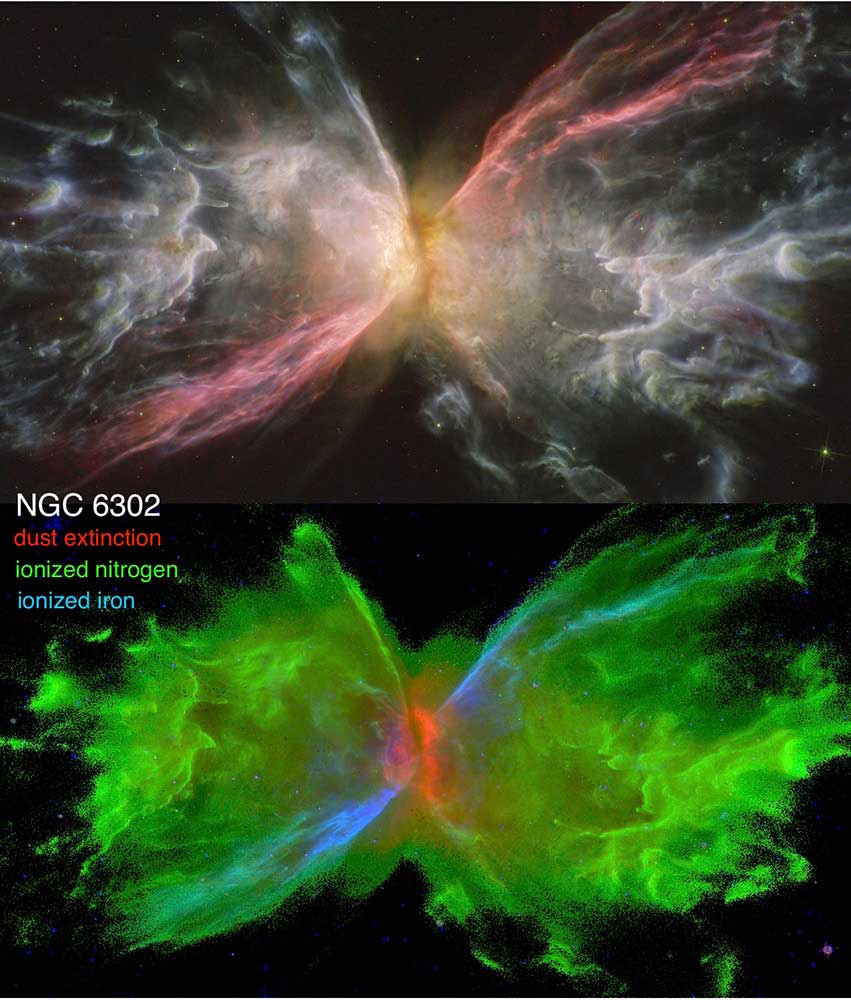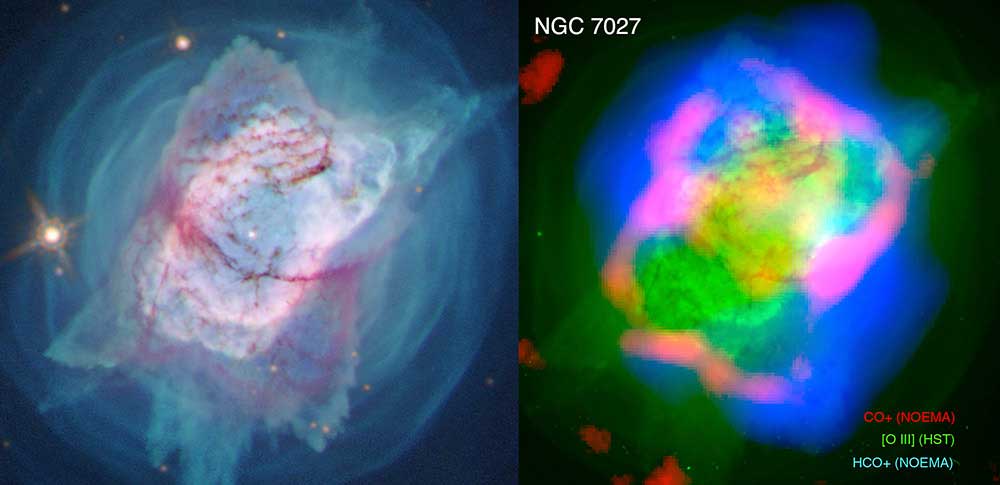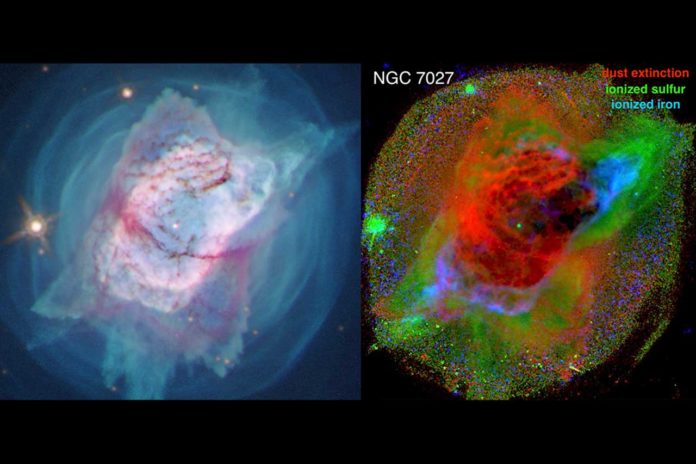In 2019 and early 2020, Hubble’s Wide Field Camera 3 observed the nebulae (Butterfly Nebula (NGC 6302) and the Jewel Bug Nebula (NGC 7027)) using its full, panchromatic capabilities. Since then, astronomers are using emission-line images from near-ultraviolet to near-infrared light to learn more about their properties.
Recently scientists from the Rochester Institute of Technology and Green Bank Observatory revealed new information about how the nebulae develop their dramatic features.
Joel Kastner, a professor in RIT’s Chester F. Carlson Center for Imaging Science and School of Physics and Astronomy, said, “We’re dissecting them.”
“We’re able to see the effect of the dying central star in how it’s shedding and shredding its ejected material. We’re able to see that material that the central star has tossed away is being dominated by an ionized gas, where it’s dominated by cooler dust, and even how the hot gas is being ionized, whether by the star’s UV or by collisions caused by its present, fast winds.”
“The new HST images of the Butterfly Nebula is confirming that the nebula was ejected only about 2,000 years ago—an eyeblink by the standards of astronomy—and that the S-shaped iron emission that helps give it the “wings” of gas maybe even younger.”

Previously, astronomers used to believe that they had located the nebula’s central star. Surprisingly, scientists, in this new study, found that it was a star not associated with the nebula that is much closer to Earth than the nebula.”
In the future, scientists hope that the James Webb Space Telescope could help locate the actual central star.
The group’s continuous investigation of the Jewel Bug Nebula is based on a 25-year baseline of measurements going back to early Hubble imaging.
Paula Moraga Baez, an astrophysical sciences and technology Ph.D. student from DeKalb, Ill., called the nebula “remarkable for its unusual juxtaposition of circularly symmetric, axisymmetric, and point-symmetric (bipolar) structures.”
Moraga noted, “The nebula also retains large masses of molecular gas and dust despite harboring a hot central star and displaying high excitation states.”
The continuous analysis of NGC 7027 with radio images from the Northern Extended Millimeter Array (NOEMA) Telescope by Jesse Bublitz ’20 Ph.D. (astrophysical sciences and technology) revealed that the molecular tracers of ultraviolet and X-ray light continue to shape the nebula.

The combined observations from telescopes at other wavelengths, like Hubble, and bright molecules CO+ and HCO+ from NOEMA indicate how different NGC 7027 are affected by the irradiation of its central star.
Bublitz said, “We’re very excited about these findings. We had hoped to find a structure that clearly showed CO+ and HCO+ spatially coincident or entirely in distinctive regions, which we did. This is the first map of NGC 7027, or any planetary nebula, in the molecule CO+, and only the second CO+ map of any astronomical source.”
The findings are presented at the 237th meeting of the American Astronomical Society on Friday, Jan. 15.
